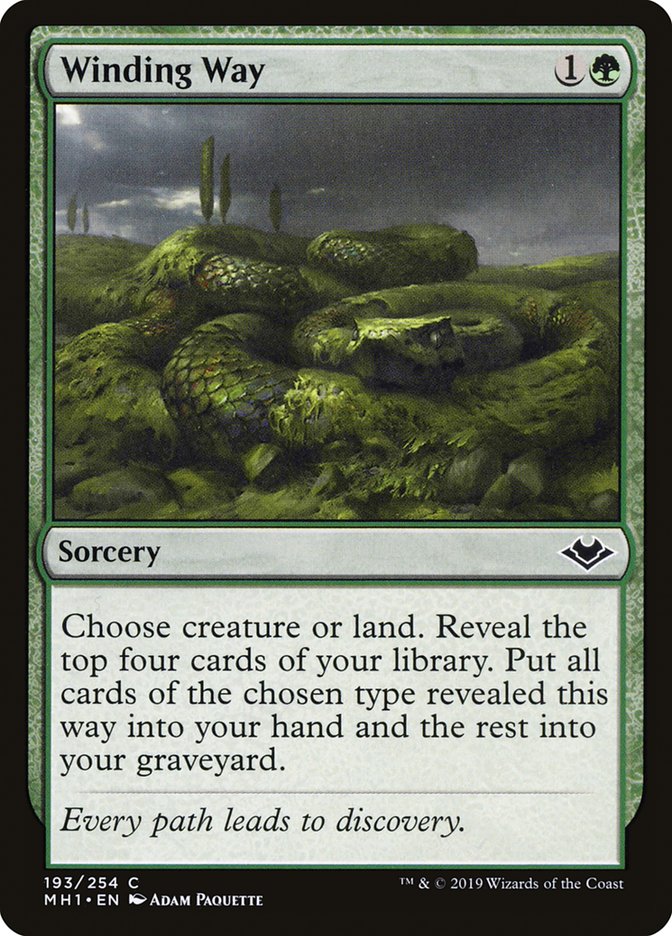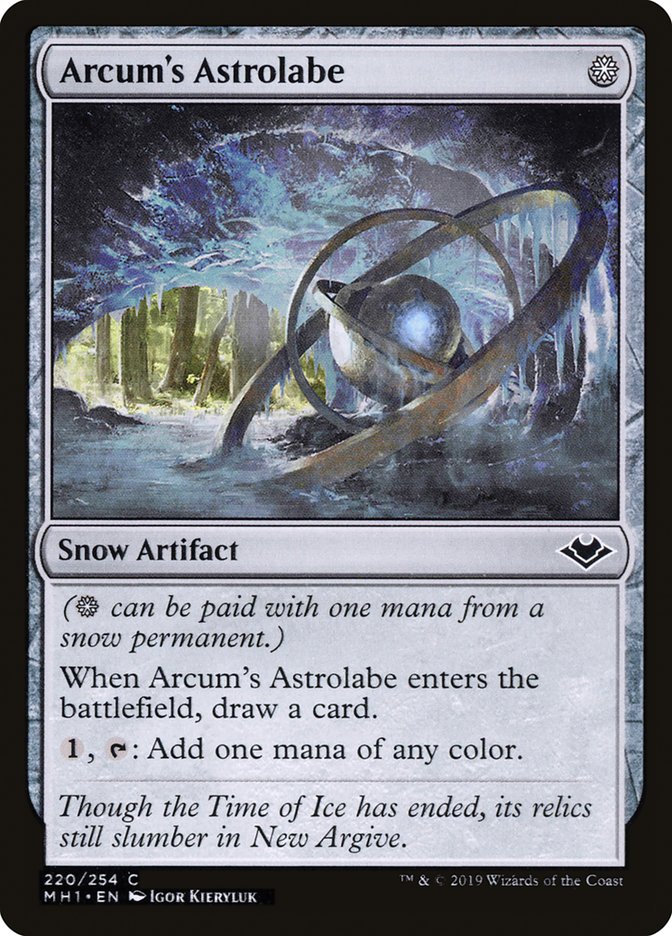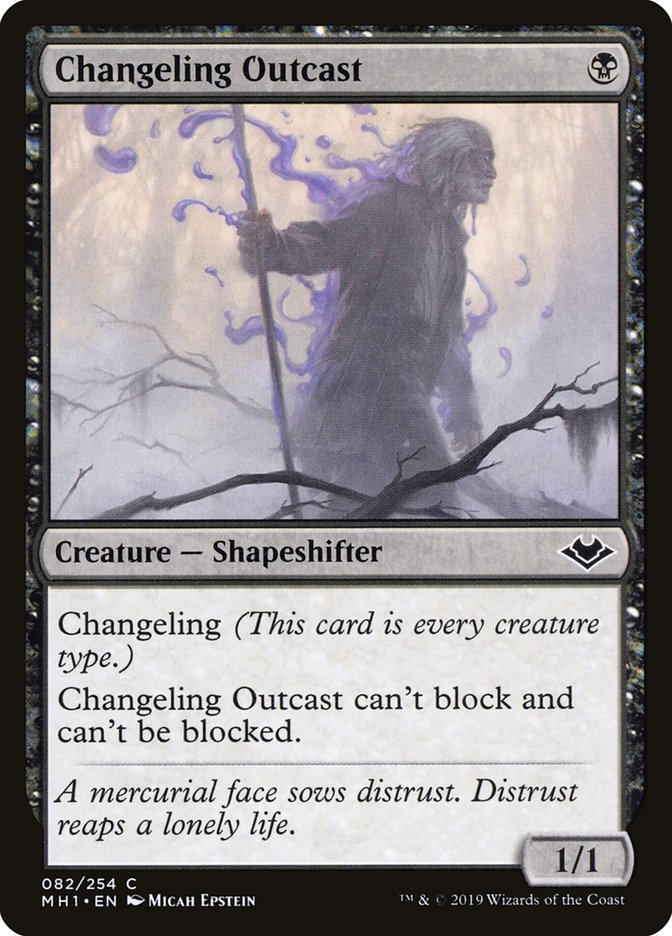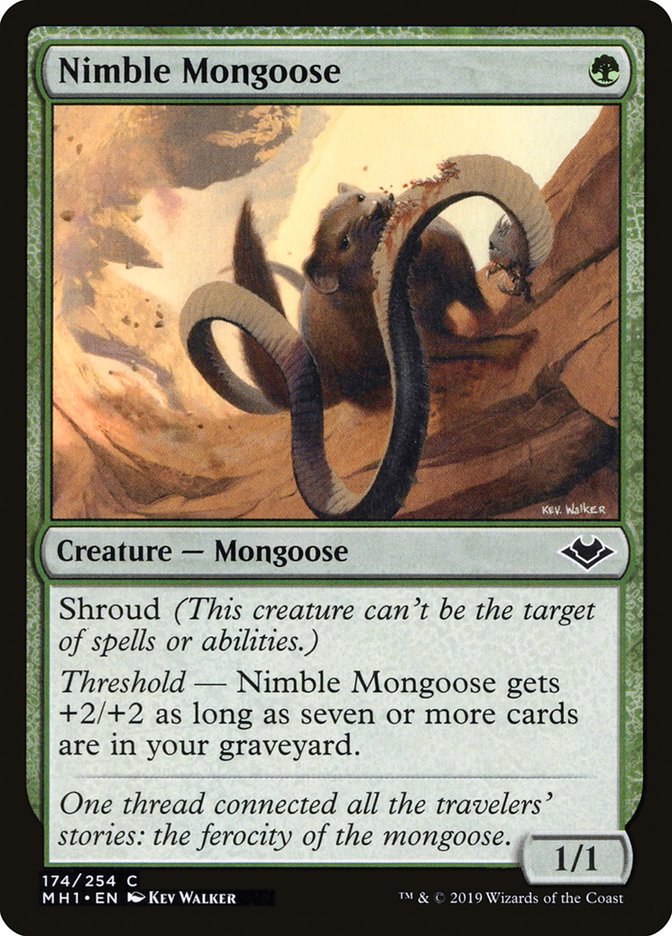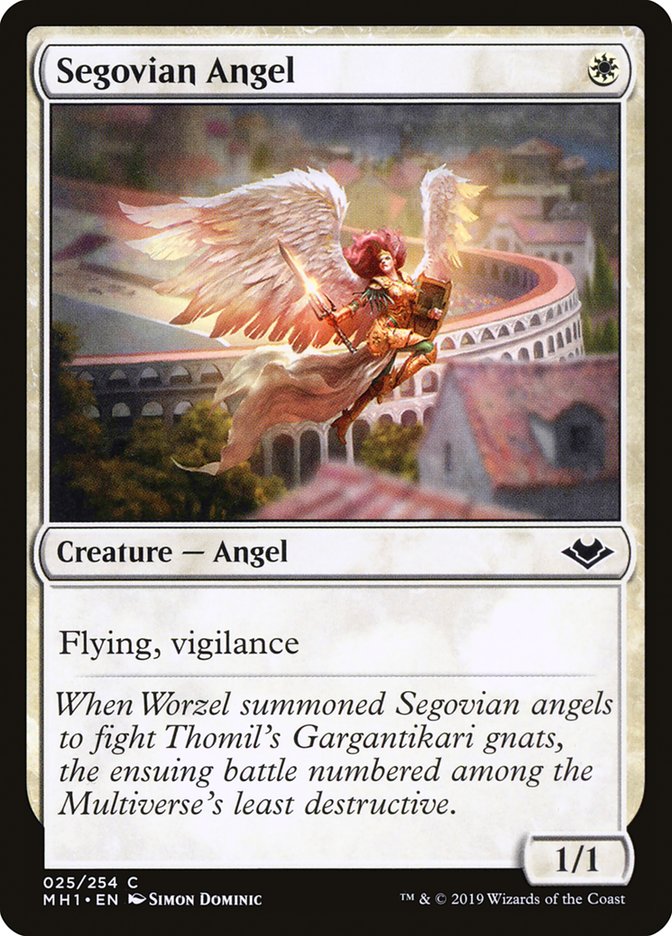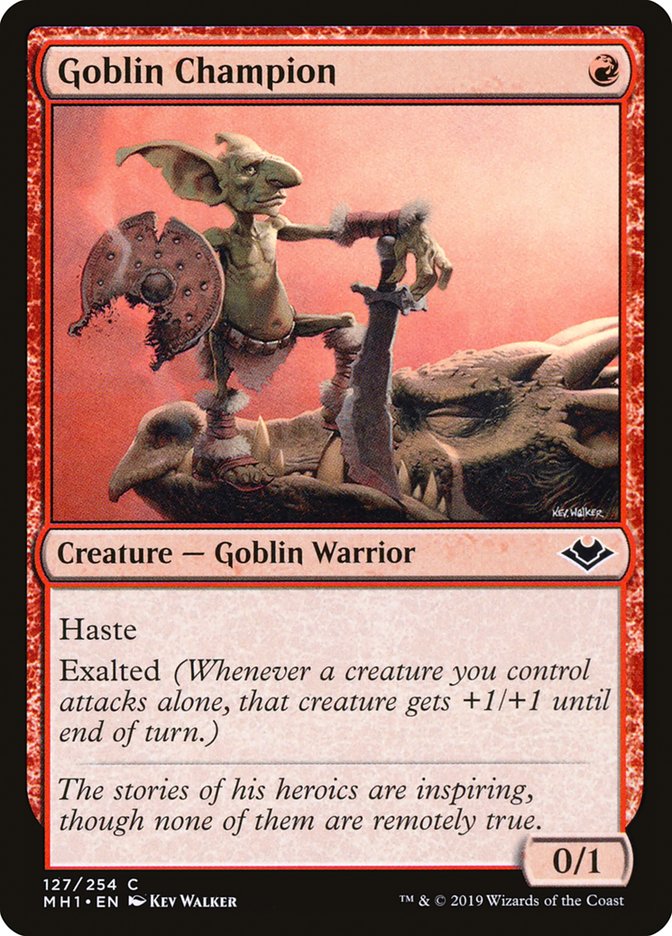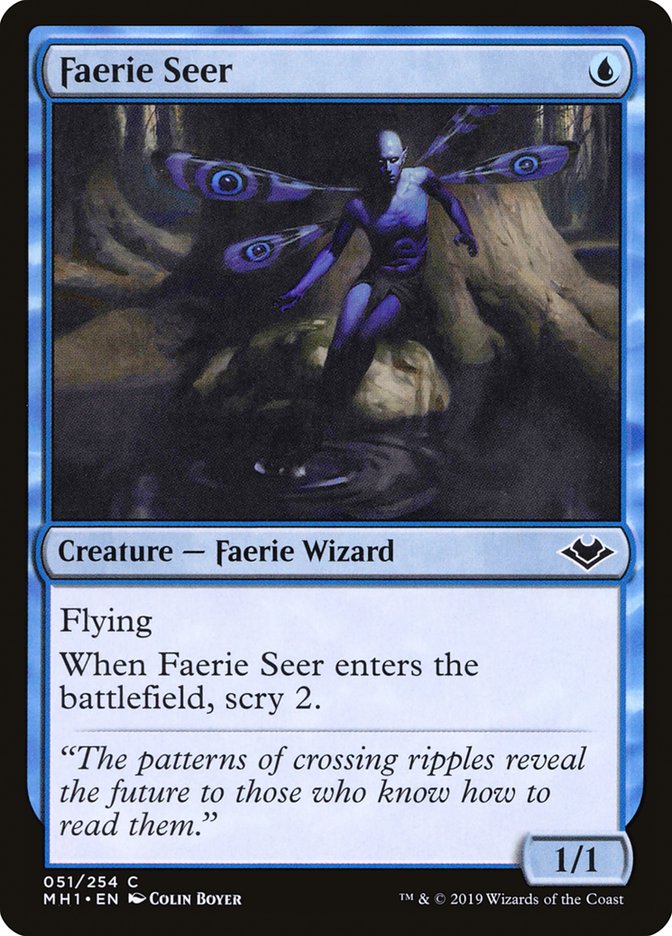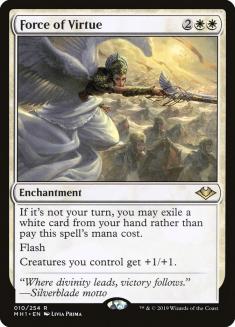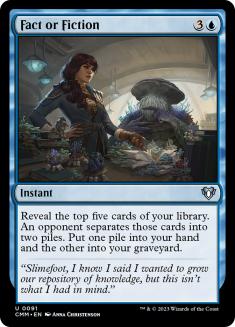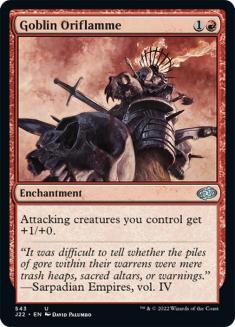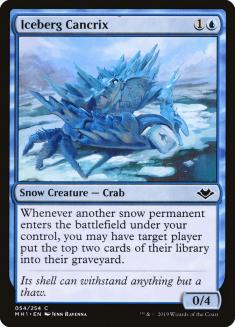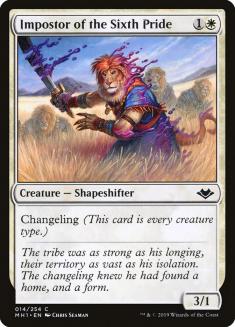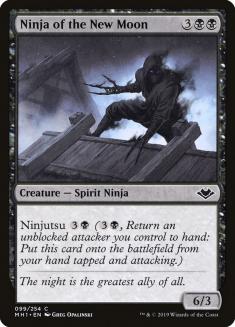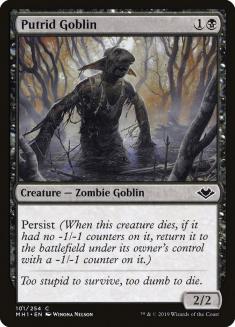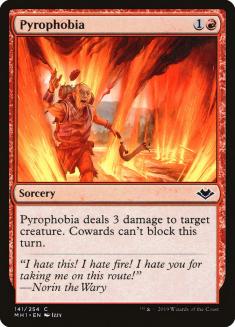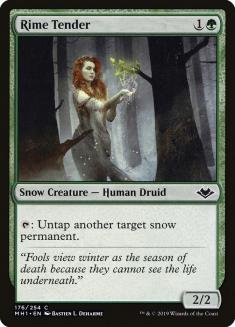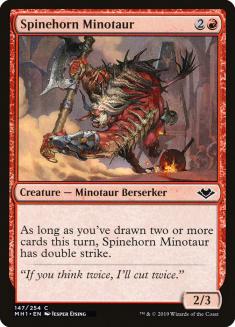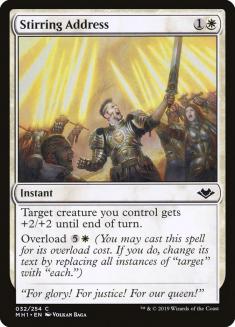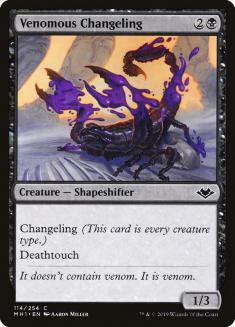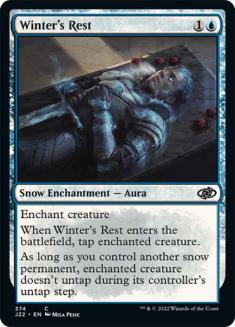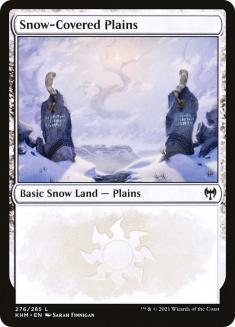This weekend is Mythic Championship IV, and the Draft format is Modern Horizons, which is in my Top 3 formats all-time. If you haven’t had a chance to draft Modern Horizons, you still have a few chances. Grand Prix Las Vegas will be Modern Horizons Limited, and it will be on Magic Online through August.
This article will not cover every archetype. It will not cover the fundamentals necessary to draft Modern Horizons for the first time. (The best resource for that is Alex Nikolic’s set of blog posts on the topic.) My goal is to introduce you to my simple approach and understanding of the format given an understanding of said fundamentals. How do you exploit them? How should this shift your perspective?
My hope is that this provides ample context in order to comprehend coverage this weekend as well as succeed in the format as a whole. In order to do this, you need to understand what drives the format: the enablers.
If you think you understand how important enablers are and take them highly enough, you should still prioritize them more than you do. The density of synergy plants in the set is so high that you’ll get them whether or not you want to. If you’re in the open lane, they’ll flow to you, but otherwise you’ll still end up with a sufficient amount. If you’re debating between Igneous Elemental and Winding Way for your Gruul Lands deck, take the Winding Way. It’s not always the correct pick — in Pack 3, for example, your first Igneous Elemental may be quite important — but it’s a good heuristic to have.
If you called me and asked “What’s the one thing I need to know in order to succeed in Modern Horizons?” we’d be done here. That’s how important the enablers are. The Ninjutsu deck is starving for that density of one-drops, the graveyard decks need their velocity, and the multicolor decks prioritize Arcum’s Astrolabe and Springbloom Druid over powerful cards. Many Limited environments propose economical questions, and this one is simply supply and demand. But you can go deeper!
It’s fairly common in Magic analysis to consider something as black-and-white: a card is either good or bad. But this isn’t actually true. Many cards are great under some lenses, but terrible under others. Winding Way is an enabler for any deck that cares about either lands or creatures in the graveyard, but the majority of Selesnya aggro decks couldn’t care less about the card.
On the other hand, there are cards that aren’t thought of as enablers for direct archetypes, yet can act as them in the proper scenario. These are the hidden gems of Modern Horizons draft, and the reasons it is one of my favorite formats of all time. I believe you can continue to innovate and iterate on this format over and over again by discovering how unassuming commons behave as enablers or payoffs. This lets you weave an innumerable number of paths based on just commons, and yields a variety of potent strategies.
Okay, so Faerie Seer and Changeling Outcast aren’t unintuitive enablers if you’ve drafted the format a couple of times, but I think they’re still important additions to this list. I consider Faerie Seer and Changeling Outcast first-pickable cards. They are some of the most important enablers for one of the best decks (Dimir Ninja), but most importantly they are one mana. Mana efficiency is crucial to success in Modern Horizons Draft due to its fast pace. Furthermore, opening the door for a snowballing advantage is a common avenue to victory, and playing early creatures facilitates that.
It doesn’t matter what color you are; you have access to good one- and two-mana creatures in order to ninjutsu a Moonblade Shinobi on Turn 3. And yes, Segovian Angel is playable for exactly this reason. No, you should not jam it into every deck. But if you behave it functions as an important enabler, then by all means draft it and play it!
Nimble Mongoose is another example of a common that you can wheel that plays an important role in the format. This might be a bit more of my pet card, as many of the other players that have been successful don’t draft it, but many of them haven’t really tried. I have played Nimble Mongoose in many different Modern Horizons decks, and every time I’m more impressed with the card. This may also have to do with how highly I prioritize Winding Way, one of the best enablers for the majority of green decks.
Having a one-mana play to grab off Winding Way such that it isn’t tempo-negative pushes the card into a higher tier. The relationship between Winding Way and Nimble Mongoose is something I call generative: Winding Way increases the potency of Nimble Mongoose, and Nimble Mongoose increases the potency of Winding Way. I often keep track of both Winding Way and Nimble Mongoose in Pack 1 because I can wheel them with enough consistency to have.
This just scrapes the surface of Modern Horizons. Enablers, cheap plays, and payoffs make the format, and constructing a deck that can make one card fit in multiple of these categories is a recipe for success.
Consider the following pack. What would you pick?
Pack 1, Pick 1
The Pack:
The Pick:
This pack has an absurd amount of options depending on the different avenues you would like to go. Force of Virtue is a powerful rare, but white is also the consensus worst color. There are some blue and black cards, but none are great for Ninjas. Both Winter’s Rest and Rime Tender have amazing homes in the snow deck, but neither deck prioritizes those cards. Cancrix is actually the best option out of this pack for the snow deck.
Forgotten Cave is the best cycling land thanks to Igneous Elemental at common. Pyrophobia is a very solid removal spell. Lastly, Fact or Fiction is far and away one of the most powerful uncommons in the set, but it is a little expensive given the speed of the format (and having an ersatz version in Rain of Revelation at common).
Personally, I would take Fact or Fiction because I love all of the blue decks and it’s an amazing card. However, one of the trophy leaders had a bit of a different take:
when i make picks such as these i dont wind up in much else… pic.twitter.com/TeOms9bZyp
— kyle rose (@KyleRoseChester) July 2, 2019
This was incredibly surprising to see, but it also makes sense. If the name of the game is “cast a creature before Turn 3 in order to enable Ninjas,” then Putrid Goblin is the best card in the pack for that.
Now, this approach isn’t sustainable. If you perceive that the majority of Magic Online players aren’t properly biasing towards Ninjas, it can be fine; however, I don’t expect this strategy of “hard force Dimir Ninja” to dominate the Mythic Championship. There is a lot of depth to the format, and understanding the other archetypes is necessary for success in a highly competitive environment. And other trophy leaders employ different strategies:
https://t.co/LkgnZ2ceNi
You might not like it, but this is what peak performance looks like pic.twitter.com/ZDOQ3Y9eXm— AlphaFrog MTG (@AlfaPhrog) July 6, 2019
This player has over 45 trophies and basically forces snow, an entirely opposite strategy to forcing Ninjas. If hard forcing two different strategies can yield such high results, I raise an eyebrow. I’ve had success with both of these strategies, yet have had my most success with Gruul Lands. Here is one of my best decks that really drives home concepts from this article:
3-0 6-0 in 45 minutes. Nimble Mongoose was utterly insane. Not a fan of the card usually, but wow did they play smooth as butter in this deck.
Draft Log: https://t.co/j6Dmfdji8L pic.twitter.com/DVctQRyjj8
— Ryan Saxe (@rcsaxe) July 1, 2019
Overall, I’m extremely excited to watch the Mythic Championship this weekend. I’m curious how this format will behave at a higher tier of competition where the most potent strategies are sought-after and hence can’t be forced. And if you remember one thing from this article: prioritize the enablers!


